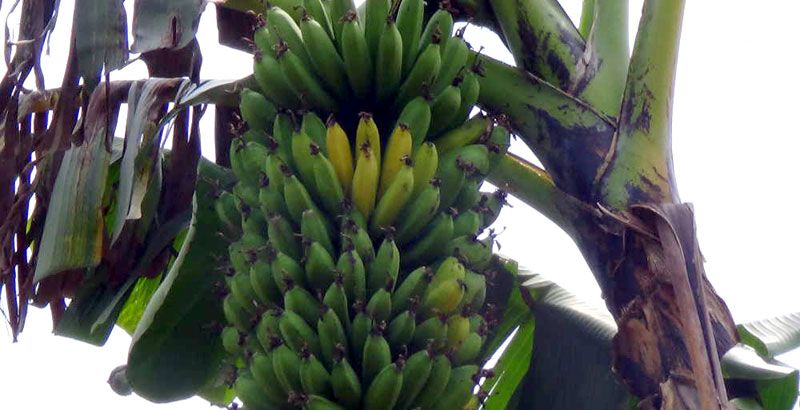
The passing into law of the Biosafety Act 2017 by the Parliament of Uganda this week has attracted mixed views from the scientific community. Some say the law removes a major barrier to the realisation of the benefits of their research, while others say some provisions of the law could energize the anti-GM community to continue to demonise the science.
This is after it emerged that the law contains some unrealistic provisions and penalties that could impede its implementation and frustrate the large scale adoption of biotechnology crops to achieve its goal of increasing food security, jobs creation, and poverty alleviation.
Some of the sticky provisions that have been cited include the requirement for any researcher to conduct an Environment Impact Assessment (EIA) before they embark on any research on biotechnology – at laboratory level.
Peter Wamboga Mugirya, from the Science Foundation for Livelihoods and Development (Scifode) says: “These hostile provisions are derived from the notion that GM crops are invasive and dangerous to the environment. These provisions are uncalled for because GM crops are not much different from ordinary crops.”
But Clet Wandui Masiga, a plant breeder who also witnessed the passing of the law, observed that the requirement for an Environment Impact Assessment (EIA) is not unpractical because it concerns work in laboratories, which are confined facilities that are detached from the environment, and there would no require an assessment.
He said: “We will consult with the National Environment Management Authority (NEMA) which is the relevant authority on this matter.”
Although Genetically Modified Organisms research has been taking place in Uganda for almost ten years, there was no requirement for an EIA at laboratory and confined field trial level, which makes sense because the organisms were detached from the real world.
Masiga says EIAs were a requirement for multi-location trials, and should remain as such.
“My view is that the law removes EIAs from where they are most needed and puts them where they are not needed,” he says.
He argues that EIAs would be necessary under multi-location trials where GMOs interact with the environment. Instead, they have been made a requirement for confined research, where they do not serve any purpose because crops or organisms have minimal interaction with the environment.
Masiga argues that the requirement for an EIA as well as the penalties being imposed on researchers for introducing terminator genes, are rooted in lack of knowledge on the part of the law makers, but expresses optimism that after its enactment, supplementary regulations will straighten up things.
He says: “The law imposes a penalty of 2000 currency points (Ushs40million) and/or imprisonment for a period not more than 20 years, for anyone who introduces a terminator gene, a misleading concept that is non-existent although popular among the anti-GMO camp. So for me, there is no reason to worry about this because it’s simply a myth.”
The same penalty applies to anyone who damages the environment, under guidelines that will be issued by the Ministry of STI to operationalise the law.
On the whole, Masiga expressed satisfaction that Uganda has got a good law that will allow the development of biotechnology to address many problems afflicting smallholder farmers.
“Parliament has made one of the most fundamental decisions by adopting the Biosafety bill into law. This is a development bill, it is non partisan, which means that all of us as Ugandans are going to benefit from it as it will put in place guidelines to ensure the safe development of biotechnology products which are safe to humans and the environment,” “I wish to salute the Speaker, the Minister (of ICT) and other MPs who worked hard to ensure the passage of the bill.”
Dr. Clet Wandui Masiga, told The Sunrise that with a law now in place, the task is left to scientists to ensure they bring the best technologies that suit farmers’s needs.
Philip Chemonges, the Coordinator of the Open Forum on Agricultural Biotechnology (OFAB) a platform through which stakeholders debate the challenges and opportunities of biotechnology, said:
“The passage of the bill is a great milestone for scientists, farmers and consumers of our country for it ensures that we harness the enormous benefits of biotechnology while minimizing any associated risks.”
With up to 15 biotechnology products under different stages of trial, the passage of the bill is likely to help Uganda claim its place in Africa as one of the countries at the forefront of agricultural research. According to Masiga, Uganda will only be behind South Africa, Sudan, Burkina Faso and Egypt that have already commercialized biotechnology products.
With the exception of South Africa which grows GM maize, most other countries in Africa started with fiber-based GM crops like Cotton. Nearly all of Uganda’s GMO research is targeting food crops.
The enactment of the law sets the stage for the many products still under confined field trials at research stations to proceed to final stages of research such as multi-location trials with farmers as well as tasting studies, before they are allowed to be commercialized.
Some of the most advanced products of biotechnology with huge benefit for Uganda include Banana’s that are resistant to the devastating bacterial wilt.
Maize which has stacked traits (properties) for tolerance against drought as well as resistance against the stem borer, are also in advanced stages. At Kacwekano agricultural research station, researchers are close to releasing potatoes that are resistant to the late blight.
Other crops in advanced stages of research include Cassava, Rice, which are considered critical to Uganda’s food security.
Wamboga notes however that the government and scientists now have a major task on their hands in ensuring that the benefits of biotechnology are visible compared to other crops. “The relevant stakeholders should be able to demonstrate to farmers that GM crops are superior to non-GM crops in terms of yield, tolerance to drought and other stresses. This will enable skeptical farmers to see the difference and debunk myths being spread by the anti-GM groups.”















Sunrise reporter
Leave a Comment
Your email address will not be published.